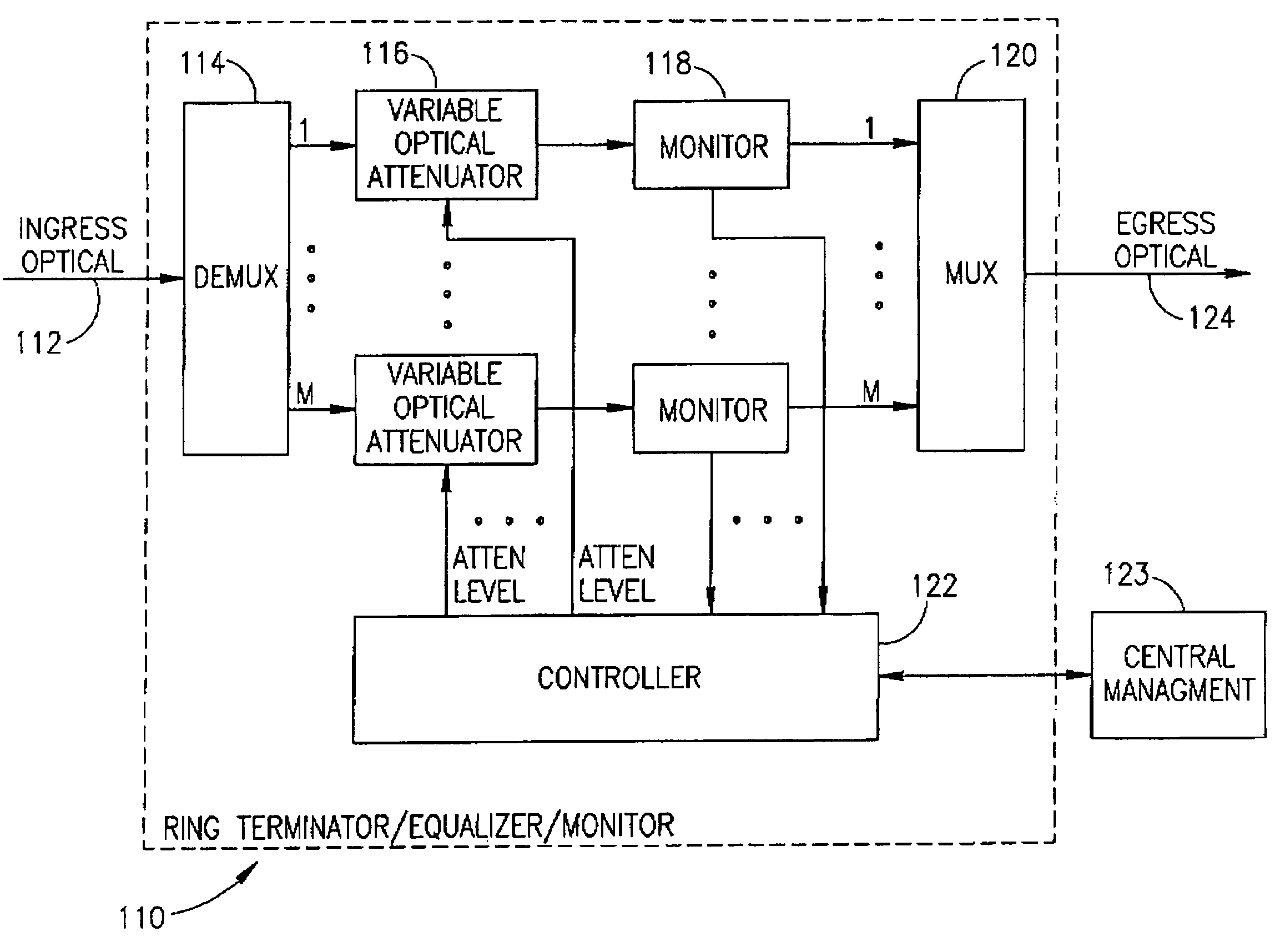Optical network terminator
a network terminator and optical network technology, applied in the field of optical data communication, can solve the problems of increasing losses, increasing losses, and increasing losses of passive optical devices, and achieve the effect of removing unwanted nois
- Summary
- Abstract
- Description
- Claims
- Application Information
AI Technical Summary
Benefits of technology
Problems solved by technology
Method used
Image
Examples
Embodiment Construction
Notation Used Throughout
[0045]
The following notation is used throughout this document.TermDefinitionADOMAdd Drop Optical MultiplexerASEAmplifier Spontaneous EmissionASICApplication Specific Integrated CircuitCPUCentral Processing UnitDSPDigital Signal ProcessorWWDMWide Wavelength Division MultiplexingCWDMCoarse Wavelength Division MultiplexingDWDMDense Wavelength Division MultiplexingEDFAErbium Doped Fiber AmplifiersEEROMElectrically Erasable Read Only MemoryFBGFiber Bragg GratingFPGAField Programmable Gate ArrayIPInternet ProtocolLANLocal Area NetworkMANMetropolitan Area NetworkOADMOptical Add Drop MultiplexerOBPFOptical Band Pass FilterOEOOptical Electrical OpticalRAMRandom Access MemoryROMRead Only MemoryWANWide Area NetworkWDMWavelength Division Multiplexing
DETAILED DESCRIPTION OF THE INVENTION
[0046]The present invention comprises an optical network terminator for terminating an optical network and removing unwanted noise accumulation. The invention is applicable to optical netw...
PUM
 Login to View More
Login to View More Abstract
Description
Claims
Application Information
 Login to View More
Login to View More - R&D
- Intellectual Property
- Life Sciences
- Materials
- Tech Scout
- Unparalleled Data Quality
- Higher Quality Content
- 60% Fewer Hallucinations
Browse by: Latest US Patents, China's latest patents, Technical Efficacy Thesaurus, Application Domain, Technology Topic, Popular Technical Reports.
© 2025 PatSnap. All rights reserved.Legal|Privacy policy|Modern Slavery Act Transparency Statement|Sitemap|About US| Contact US: help@patsnap.com



